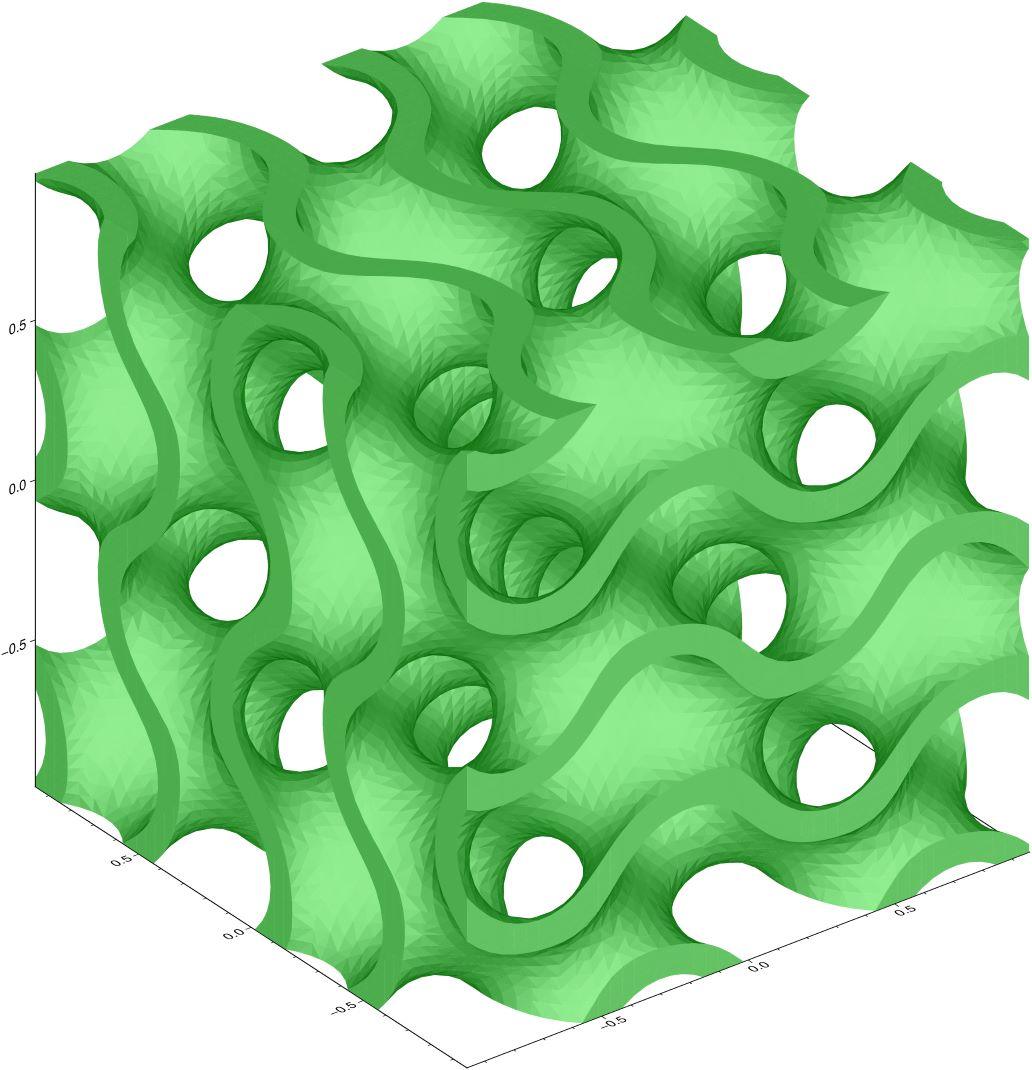fv2fv
FV = fv2fv(F, V; proj="", proj4="", wkt="", epsg=0)::GMTfvCreate a FacesVertices object from a matrix of faces indices and another matrix of vertices (a Mx3 matrix).
Args
F: A matrix of faces indices or a vector of matrices when defining bodies made of multiple surfaces (cylinders for example).V: A Mx3 matrix of vertices.
Kargs
projorproj4: A proj4 string for setting the Coordinate Referencing Systemwkt: A WKT SRS.epsg: Same asprojbut using an EPSG code
When using Meshing.jl we can use the output of the isosurface function, "verts, faces" as input to this function.
F: A vector of Tuple{Int, Int, Int} with the body faces indicesV: A vector of Tuple{Float64, Float64, Float64} with the body vertices
Returns
A GMTfv FacesVertices object.
Example
using GMT, Meshing
gyroid(v) = cos(v[1])*sin(v[2])+cos(v[2])*sin(v[3])+cos(v[3])*sin(v[1]);
gyroid_shell(v) = max(gyroid(v)-0.4,-gyroid(v)-0.4);
xr,yr,zr = ntuple(_ -> LinRange(0,pi*4,50), 3);
A = [gyroid_shell((x,y,z)) for x in xr, y in yr, z in zr];
A[1,:,:] .= 1e10; A[:,1,:] .= 1e10; A[:,:,1] .= 1e10; A[end,:,:] .= 1e10; A[:,end,:] .= 1e10; A[:,:,end] .= 1e10;
vts, fcs = isosurface(A, MarchingCubes());
FV = fv2fv(fcs, vts)
viz(FV, cmap=makecpt(T="0/1", cmap="darkgreen,lightgreen"))
See Also
extrude, flatfv, loft, grid2tri, revolve, surf2fv
These docs were autogenerated using GMT: v1.29.0